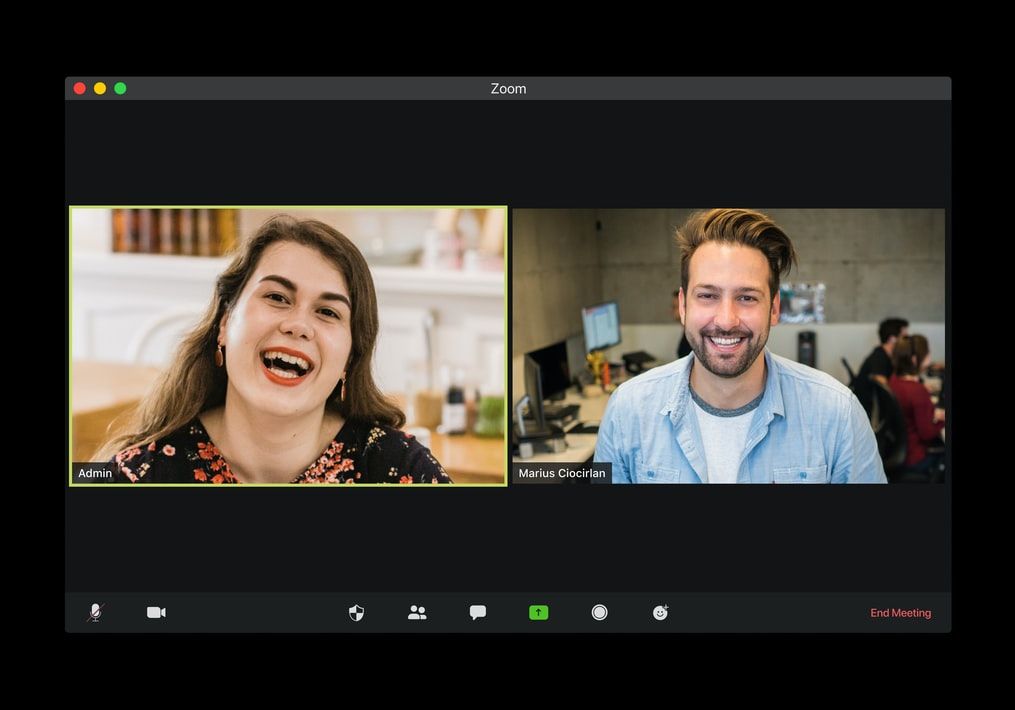Working remotely feels like the new normal now, but most of us here at hackajob were working in the office before the pandemic hit. Remember drinking coffees together? Or having one-to-ones in person? Or even just joking around the proverbial water cooler, and sharing half of our days with each other? It may seem like a lifetime ago, but you weren't dreaming, it really did happen!
Things have been growing quickly here at hackajob and we’ve been hiring new people to support this growth. Many new joiners were used to working from home due to the pandemic, but not many of them were used to starting a new job remotely. Onboarding online can be difficult when you’ve never even met the people you're going to be working with which is why we thought it'd be handy to share some of our top tips.
This is even more pertinent when you take into consideration that each person has their own unique way of communicating and of giving and receiving feedback. According to studies by Dr. Mehrabian, how we interpret a message is 7 percent verbal, 38 percent vocal and 55 percent visual. So if 93% of communication is nonverbal in nature, then a lot of the things we're trying to communicate can be lost when we’re not seeing the other person.
So what does this mean for you? Well, we’ve been interviewing new joiners from different teams to see what their expectations and challenges were while onboarding remotely and this is what they had to say:
“I was afraid that it would take me more time to adjust since this is my first serious job. But thanks to my helpful colleagues, I managed to adapt pretty fast and become a productive member of the team.”
Another person was also traveling abroad when they started this new role.
“I thought it was going to be a lot to take in and I was worried I wouldn't be able to internalise what was going to be shared and told. I'm glad to say I was very wrong.”
However it wasn't always smooth sailing. Some people struggled with the remote onboarding process:
“The first month of joining the business was difficult, trying to learn everyone’s name, all the different platforms, being confident doing a kick off and then learning all the clients, all these within one role. But we got there.”
Others were expecting the worst case scenario, but they were pleasantly surprised:
“My expectations were probably that it would be quite rigid and that I’d meet a lot of people and not understand musch. When you get to meet people in person it is more organic...[however] it was so chill and very easy. Everyone was really nice, it was a sweet onboarding.”
Don't worry, we're going to go more in depth with remote onboarding, from the first few days, to expectations and managing relationships. Keep reading to find out so you can onboard in the best way!
1. Extra support is needed in the first few days

The first few days at hackajob felt quite overwhelming for most of the newbies, so we recommend taking time to familiarise the new joiners with any technical terms or training they may need.
“I was not used to such a fast paced environment and was unfamiliar with many of the technical terms.”
Sometimes even just being understanding to how it must feel can help:
“There were many new things that had to be kept in mind, but the team leads were understanding enough and didn’t put pressure on the rest of the team.”
“I enjoyed meeting people from all the different teams in the first few days which made me feel like a real part of the team and the company."
Extra support can also come in the form of team members. For example one new joiner thoroughly enjoyed meeting other team members through the online social events (SuperBowl, Lunch & Learns).
Having groups of new employees joining at the same time in the same team also proved very helpful:
“We were joining video calls and meeting people together and this made things easier.”
2. Help foster organic professional relationships between colleagues

At hackajob we use the Slack feature 'Coffee Dates' which randomly allocates each person a buddy for the week to have a short 'coffee date' together to get to know each other. This was highly popular when we were in the swing of lockdown.
“It's been easier to build relationships with the people in my direct team as we speak everyday [...]. The Coffee Dates feature has been amazing for meeting others around the business. I feel like I know people in other teams on a more personal level.”
Others are still in the process of creating bonds with their colleagues:
“Due to online working it is much difficult to keep in touch with them."
Another person created relationships with their colleagues through Zoom calls and the Donut app as well. However, they found it difficult to connect with all the people in the company too:
"It’s really easy to just go through weeks and not really speak to others about anything unless it’s work”.
If the above is the case; we recommend having a virtual 'pub' (or equivalent for those who don't want to drink) where no work talk is allowed. Other popular options were a Gaming club, Film club and Book club.
3. Acknowledge the big challenges you face so you can improve the process

The only way to get better is to receive feedback about what you're not doing well, so don't forget to find out what your new joiners are finding difficult so you can help, and also what they've enjoyed so you can keep doing this.
The biggest challenge for this person was to get used to the fast paced environment. However, their overall experience while working remotely has been positive:
“I really liked the onboarding process and I don’t know what I can change to make it better.”
Others feel that they are able to understand things better and faster in person rather than online, but that:
“The support given is amazing, whether it’s people on the management side or other members of the team”.
"For me personally, the loneliness aspect was the hardest thing to overcome. It was difficult not having someone physically near me to ask questions, like you would in an office."
Some people would have liked to learn more about all the different teams in the company:
“I think a document describing a little of each team would be very helpful.”
4. Remote Feedback

Clear and honest communication is the key to being successful and productive in the workplace. There are mixed feelings across teams in terms of online communication. For some people it is easier to receive and give feedback on Zoom or slack, while others miss the “personal” aspect of communication:
“You cannot engage with that person’s body language."
Others don’t mind giving or receiving feedback virtually:
“We also have 1-to-1 every Monday and this makes things really easy as we have time for the feedback for the week ahead as well.”
Here's how our new team members described their onboarding experience in one word:
“Exciting”
“Smooth”
“Challenging”
“Straight-foward”
“Engaging”
In a utopian world, every new member of the team would have the perfect remote onboarding experience, but we all have unique personalities and sometimes online tools, such as Zoom just can’t cover all our needs. Our most recent internal survey showed that a mix of on-site and remote work is ideal for everyone, but until we can start meeting again in an office we will be working on improving the onboarding process so that everyone feels a bit less lonely and a bit more connected to the rest of the teams.
Like what you've read or want more like this? Let us know! Email us here or DM us: Twitter, LinkedIn, Facebook, we'd love to hear from you.





